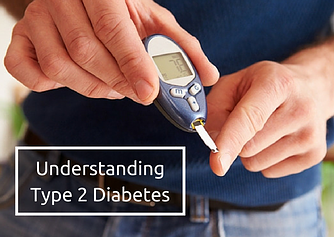Diabetes is more treatable now than ever, however it still needs to be managed and requires attention by the diabetic patient. There still are many diabetic complications.
As physicians, we’re most concerned with the complications associated with any vital organ that involves blood flow from the heart to the arterial system. These vital body parts include the eyes, heart, kidney, brain, limbs, and nervous system, as well as the small and large intestines. Complications concerning any or all of these organs can be prevented if diabetes is detected early and patients are able to keep their blood sugar levels within “normal” ranges.
This can be difficult for many patients, especially in the first six months to a year during which they learn to manage their diabetes.
Track Your Blood Sugar 
Blood sugars can be tracked fairly closely with a number of devices as well as blood markers. While there are devices in clinical trials that may one day measure blood sugar non-invasively, such as with lasers or light, these are not yet on the market.
We are currently able to determine a patient’s average blood sugar level by following Hemaglobin A1C test results that reflect these averages over two to three months, or by following Fructosamine test results reflecting averages for at least two weeks. These averages can be confirmed with real time checks or with monitors, such as Continuous Glucose Monitoring, that record blood sugar levels over long periods of time.
Treatment Plan with Your Physicians and Healthcare Team
Your physicians in conjunction with a dietician and/or diabetic educator play an important role in developing the plan based on your overall health. They will look at factors that can contribute to the complications of type 2 diabetes — and which therefore need to be taken into consideration when developing a treatment plan — including:
- Weight, Lifestyle and Exercise
- Blood Pressure
- Lipids
While current treatments for type 2 diabetics include pills, insulin injections, and modification of one’s lifestyle (usually with diet and exercise), there have been ongoing improvements in the technology associated with the disease. For example, the delivery of insulin has evolved from using needles to using pens with ultra fine tips (which are already drawn up for the patient). Patients just turn a dial on the pen to the correct dosage and inject the insulin.
For individuals who have a difficult time controlling their insulin levels and thus their diabetes, there are palm sized insulin pumps that patients wear 24-hours a day, seven days a week. The pumps monitor, measure, and inject the correct dosage of insulin automatically.
Clinical Trials
Clinical trials have led to a number of new therapeutic treatments that improve the quality of life for diabetics. We should continue to see new developments in the near future, including new delivery methods, non-invasive monitoring of glucose levels, and monitors that alert patients to rising or falling blood glucose levels — long before the patient actually begins to experience symptoms.
At present, newer, long- and short-acting insulins cannot be mixed in one pen. Studies are now underway to solve this problem. This would free patients from the need to make multiple injections. In addition, there are research studies exploring oral insulin therapies.
Along the same lines, the discovery of another physiologic mechanism of glucose control has been shown to affect blood sugar levels via the gut hormones (the incretins). There are numerous research studies underway whose goal is to prolong the effectiveness of these incretins so that, rather than injecting once or twice daily, patients will be able to inject themselves once a week or once a month.
Recent results from new diabetic research studies introduced a new family of medications that prevent the re-uptake of sugar from the kidneys and increases urinary sugar, thus reducing actual blood sugars.
SGLT2 is a protein in humans that facilitates glucose (sugar) reabsorption in the kidneys. These studies involved a protein called SGLT2 inhibitors which has been recently approved by the FDA for type 2 diabetes patients. When combined with exercise and a healthy diet, the SGLT2 inhibitors can improve glycemic control by blocking the reabsorption of glucose and effectively increase urinary sugars while reducing the actual blood sugar.
As more diabetic studies are performed at investigative research sites like Chase Medical Research, advances in the treatment of type 2 diabetes will continue. If you're interested in participating in a clinical trial related to diabetes, don't hesitate to contact us.
Share This Post
Recent Posts
- Obesity and Cardiovascular Disease: Is There a Link? March 4 2015
- Lp (a), A New Lab Test for Cardiovascular Risk March 4 2015
- Mediterranean Diet and Lifestyle Choices for Improved Health March 4 2015
- Understanding the Relationship Between Obesity & High Blood Pressure March 4 2015
- Cardiovascular Diseases Explained March 4 2015
Categories
- Clinical Trials
- Cardiovascular Disease
- Diabetes
- Obesity
- Kidney Disease
- Pain Management
- Female Sexual Dysfunction
- Hypertension
- Migraine
- Vaccine
- Chronic Obstructive Pulmonary Disease
- Osteoarthritis
- Biologics
- COVID-19
- Cholesterol
- Diabetic Peripheral Neuropathy
- Gastroesophageal Reflux Disease
- Irritable Bowel Syndrome with Constipation
- Lyme Disease
- Nonalcoholic Steatohepatitis
- Respiratory Syncytial Virus



